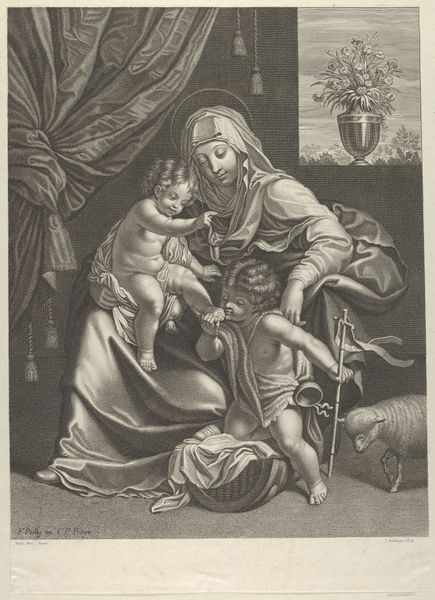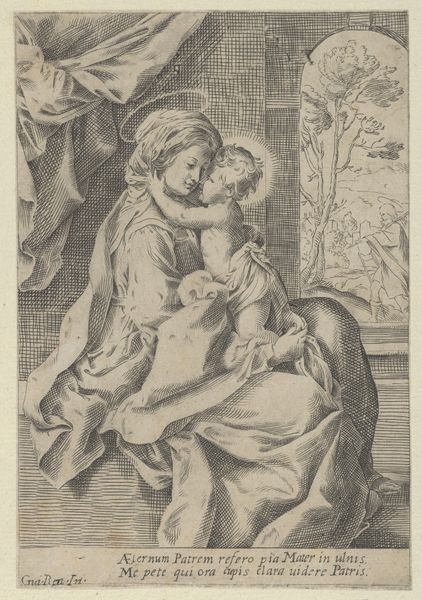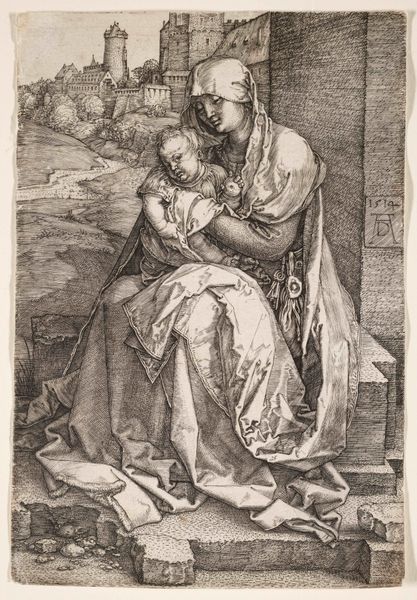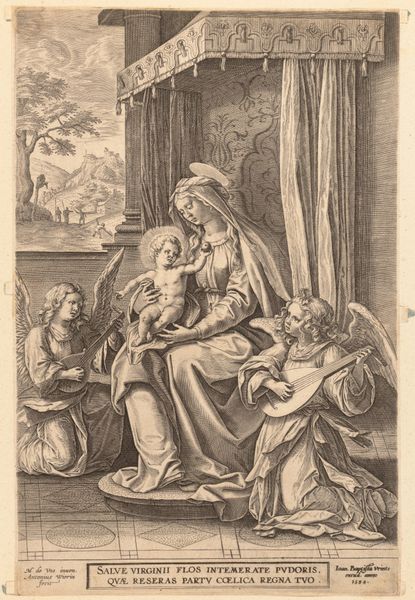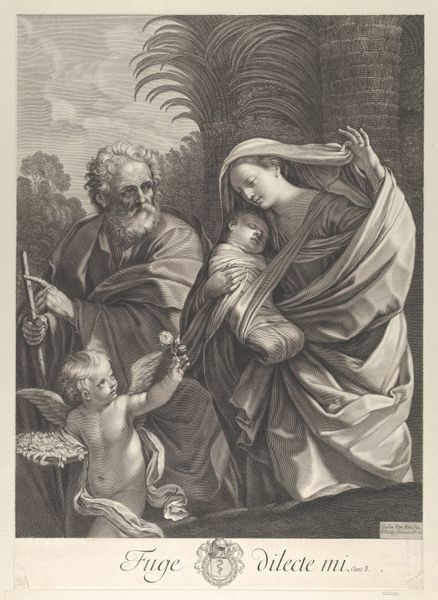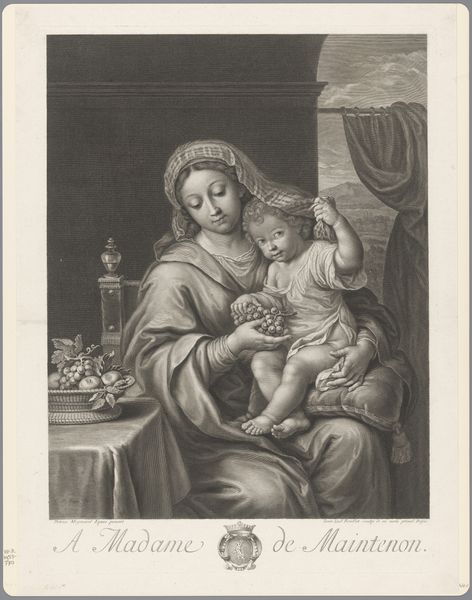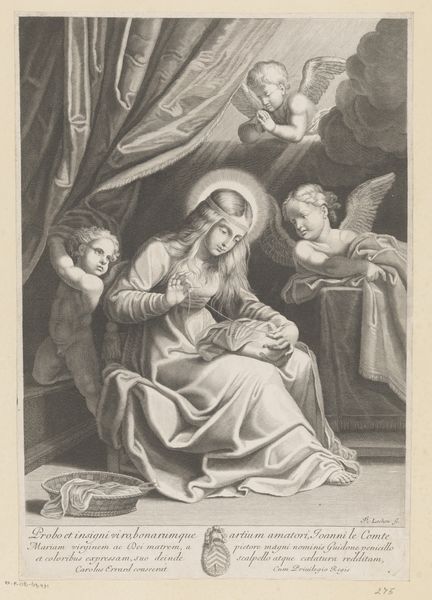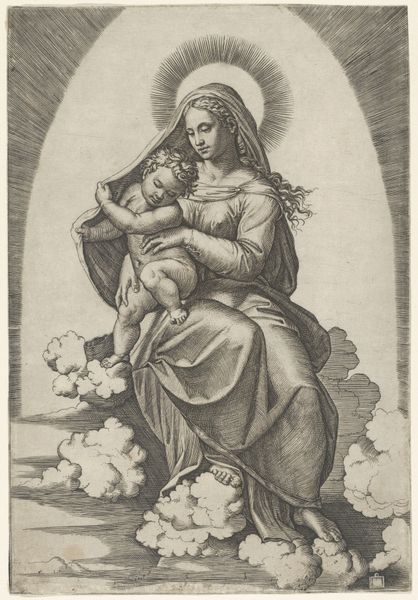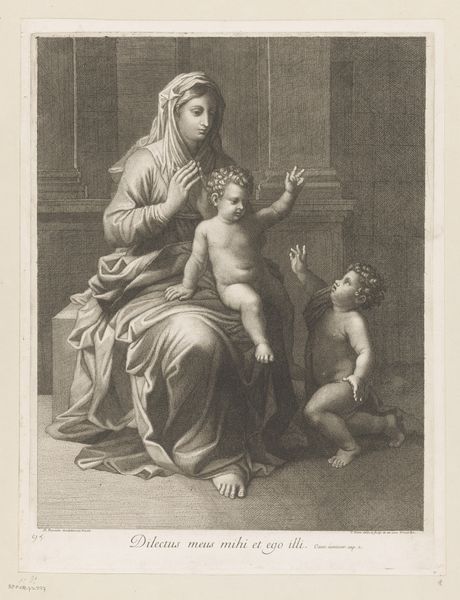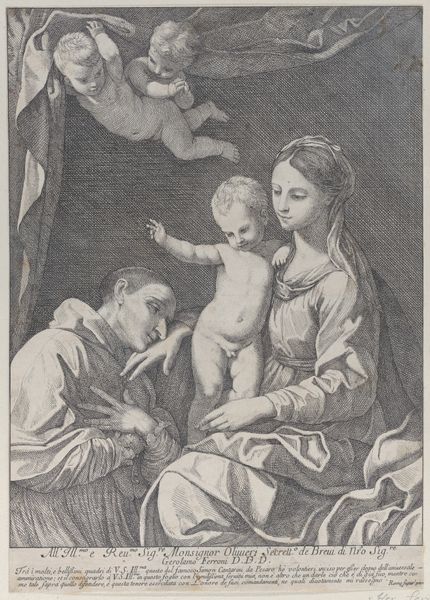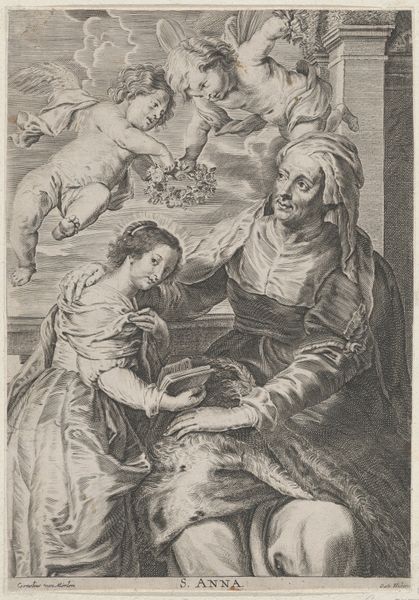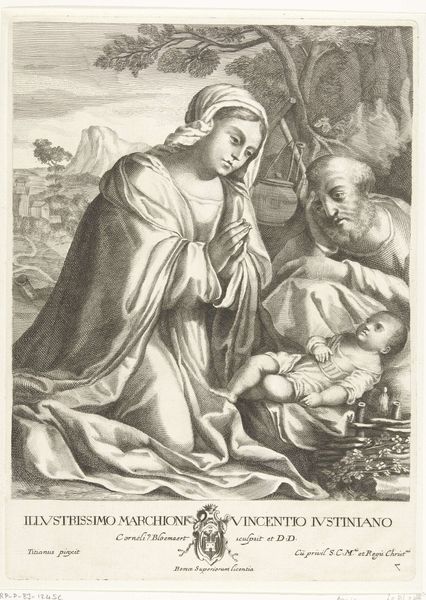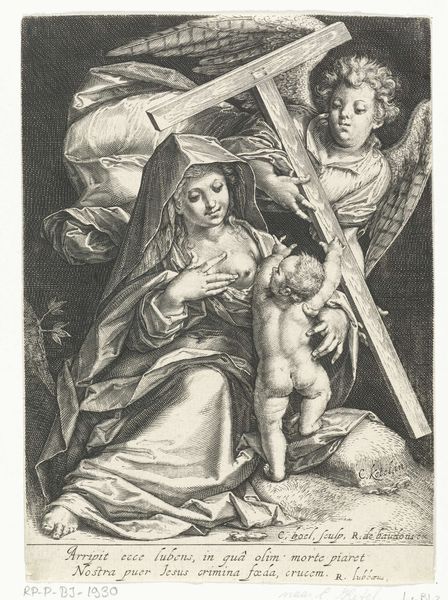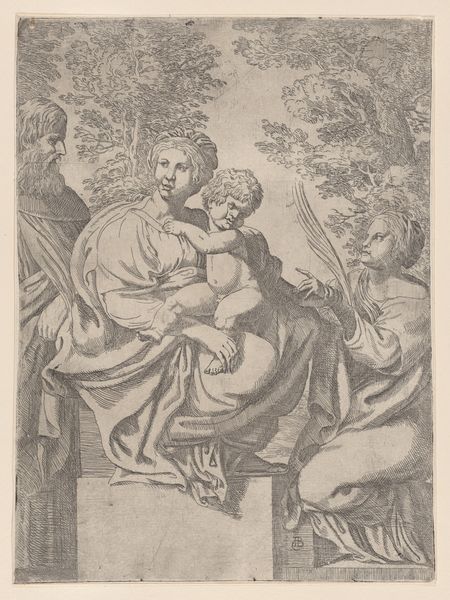
The Virgin seated with the infant Christ on her lap, the young Saint John the Baptist kneeling on Christ's cradle and caressing his foot, a lamb at right, after Reni 1645 - 1704
0:00
0:00
drawing, print, engraving
#
drawing
#
baroque
# print
#
landscape
#
figuration
#
line
#
history-painting
#
engraving
#
virgin-mary
Dimensions: Sheet (Trimmed): 16 7/16 × 14 3/16 in. (41.7 × 36 cm)
Copyright: Public Domain
Curator: Before us, we have a print titled, "The Virgin seated with the infant Christ on her lap, the young Saint John the Baptist kneeling on Christ's cradle and caressing his foot, a lamb at right, after Reni." Created sometime between 1645 and 1704 by Guillaume Vallet, it depicts a tender moment of religious devotion. Editor: It's a rather melancholic scene, even with the playful children. The grayscale gives it a somber, reflective quality, as if looking back on a sacred memory through time. Curator: Absolutely. The landscape peeking from the window is classic and recalls many Renaissance paintings. The Virgin, Christ, and Saint John appear within structured architecture which opens into the outside. What feelings does this symbolic framing evoke for you? Editor: There's a distinct sense of protection but also, confinement. The Virgin's protective pose reinforces this feeling of guardianship. You notice how her gaze is cast downward. It invites empathy, or maybe a foretelling. It’s difficult to know. Curator: Well said! Consider the figures themselves. We see Saint John, a lamb beside him, on bended knee. What's intriguing here is the emphasis on youth—a pure, unspoiled devotion to Christ that prefigures their later roles. The image as a whole is a vehicle of catechesis—that is, it has pedagogical elements which offer ways to understand early Christian teachings. Editor: It seems to capture the burgeoning relationship between sacrifice, family, and the divine, all interwoven. How does a print like this function within the context of Baroque art and the socio-political climate of the time? Curator: Remember that engravings like this one often democratized art by allowing for wider circulation, as opposed to unique paintings commissioned by the elite. This piece provided individuals access to devotional imagery that bolstered faith, offered comfort, or reaffirmed cultural values amid tumultuous social conditions. Editor: It's fascinating how a single image can function on so many levels—artistic, religious, social. Looking at this image, I am thinking about accessibility and visual communication; it must have fostered dialogue. Curator: Indeed, its subtle power resides in its accessible symbolism—rendering the divine knowable. This is an opportunity to study a very Baroque use of religious messaging.
Comments
No comments
Be the first to comment and join the conversation on the ultimate creative platform.
